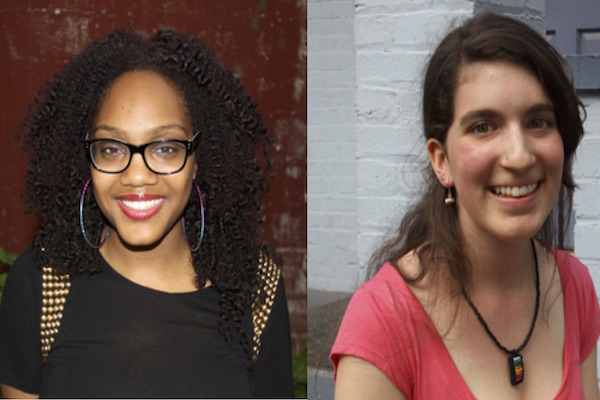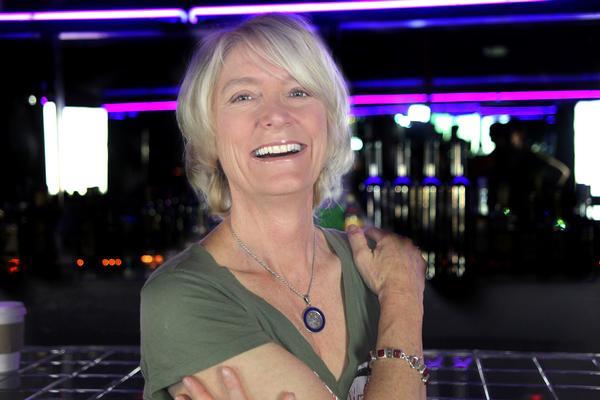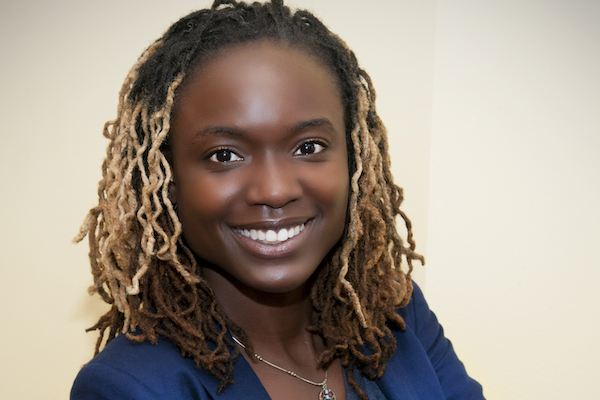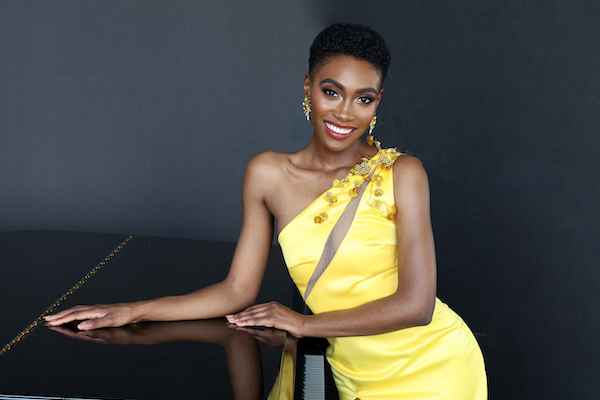
SMYAL Launches 2016 Scholarship Program
February 24, 2016
All Hail the Queer Queens of Qomedy
February 26, 2016During the last year and a half, students of color across university campuses, stretching to the four corners of our country, ushered in an era of black liberation and empowerment on college campuses in a way that has not been seen since the Civil Rights Movement. Exhausted and fed up by both institutional and individual racism, collectives were formed and demands were made.
In a completely separate but very complementary effort, Dr. Sheena Howard laid the groundwork for her first film, Remixing Colorblind. This film “examines how the educational system today shapes our understanding of race and, by extension, the nuances of race relations – including notions of implicit bias, individual racism, institutional racism and reverse racism. This is explored through conversations with faculty, administrators, teachers, guidance counselors and young people across different types of institutions, including HBCU’s, predominantly white institutions, high schools in the inner city and on the street interviews.”
Dr. Howard, is Chair of the Black Caucus (NCA) and Assistant Professor of Communication at Rider University. Howard is an award-winning author, including a 2014 Eisner Award winner for her first book, Black Comics: Politics of Race and Representation (2013). She is also the author of Black Queer Identity Matrix (2014) and Critical Articulations of Race, Gender and Sexual Orientation (2014).
Dr. Howard hopes that viewers will “embark on a journey that will encourage them to critique the ways in which the educational system has shaped their own notions of race and influenced their relationships with others.”
Tagg Magazine was able to talk with Dr. Howard about her reasons for making the film and the changes she hopes it will bring.
Tagg: What drew you to make Remixing Colorblind?
Dr. Howard: It was a culmination of a few things. I am a young faculty member of color. I have taught at predominantly white institutions since my graduation. I did my graduate studies at Howard University. For three years I was immersed into a community with only people of color. So working in predominantly white spaces where I am not seeing any African-American Professors, let alone any other minorities, I started thinking about the structural issues that are preventing faculty members of color from landing jobs at institutions.
Millennials were also a huge reason I made this film. Everyone says they are color blind and a diverse generation. I started observing on my the demographic shift of the high school population. By 2020, in the Northeast corridor of the US, there will be more students of color graduating from high school than white students. I am starting to see the changes in enrollment at my own institution but we still have issues retaining students of color. So that got me thinking about the racialization of institutions.
I am a researcher with resources available to me. The culmination of those things convinced me to use those resources and tell this story in a way that would have a deep impact.
Tagg: What impact do you want this documentary to make?
Dr. Howard: I believe in higher education. I have dedicated my life to being an educator. I want institutions to be prepared for the influx of students of color so that these students are not walking into institutions facing racism. I want institutions to use this documentary as a tangible opportunity for conversations that will lead to changing practices that will be conducive to students of color.
Tagg: What surprised you the most while making Remixing Colorblind?
Dr. Howard: There were a couple of things that surprised me. I don’t think people care enough or take the time to assess their campus culture by asking the important questions. Questions like, “how is the campus culture reinforcing racism, white supremacy and structural racism?” This is both at institutions with a high number of students of color but especially at predominantly white institutions. This happens on many campuses even though they project a value of diversity.
We also talk a lot about social media in the documentary. There is no difference between the stories of old where the “N” word was scratched on a student of color’s desk or it being cast over social media. Today, social media allows people to call you the “N” word and you won’t even know who said it. Social media is just an extension of what has always been. We are just using different tools. I don’t think people quite see this correlation. Yik Yak is a big issue and is even addresses as one of the demands on TheDemands.org. Students want Yik Yak banned on college campuses because of how it is used to foster racism.
Tagg: Did you learn anything you didn’t know before?
Dr. Howard: I think one of the big things I learned was that students are adept at dealing with racist comments on campus. White students say prejudice things all the time. These incidents are the least of their concerns. They are more concerned about institutional racism; The way they are treated in class and how campus culture allows racist incidents to happen. I walked into this project strongly believing that the individuals who run universities are responsible for the incidents of racism that we see on campus yet they are not taking responsibility. How many times does a student group need to complain before something is done? How many racist things happen before it gets to the point where the public knows about it?
With the amount of money that it costs to attend a university, students should not be asked to both pay their tuition and digest racism disguised as an argument for freedom of speech. With the influx of students of color projected over the next few years, not addressing this issue could drastically affect how universities survive.
Tagg: In the trailer you focus on students but you also address the lack of diversity within university faculty, can you talk a little about how the film also addresses this topic?
Dr. Howard: I wanted to focus heavily on the students but I do talk to Dr. James Peterson, who is an MSNBC correspondent and Professor at Lehigh University. I also spoke to Professor Yaba Blay who was with Drexel University at the time. She was also the 2012 consulting producer of CNN’s Black in America. I wanted to hear from successful black academics who don’t normally get to talk about faculty diversity. They are not asked those questions in interviews. We also talked to students and asked them if having predominantly white faculty members on campus tells them something about who gets to be faculty? Does it tell them something about who is valued as being the ones to disseminate knowledge? We present the perspectives of both students and faculty of color.
Tagg: What’s next after the premiere in Philadelphia on February 25?
Dr. Howard: I am going to focus on the film festival circuit and I am setting up a campus tour with a Q&A. I think that is a great way to get people to take real action. We already have a list of interested universities.
Tagg: Any ideas about other projects being born from this one?
Dr. Howard: Yes, one of the things I want to do is provide a companion to this film as a resource for universities to use as tangible action items and things they can do to make their campus culture more conducive for students of color. For example, you could use this tool to get a list of textbooks written by people of color who are experts in their field. There will be resources for PWIs to help them diversify their student population and grapple with notions of race. One radical idea I have is to create an exchange program allowing students from PWIs to study at an HBCU for a semester and vise versa. I know that is a more radical idea, but tools and ideas like that will be in this companion tool.
Tagg: What legacy do you want to leave with the work you do?
Dr. Howard: When I look at the work I do as a whole there are two things I want to do. I think dismantling the negative perceptions that are associated with black people is what I want to do. I think people interact with us as a member of a group and not as an individual. White people have an advantage of people interacting with them as individuals. So when someone sees me walking down the street, I have to navigate through all of these negative associations they have of me. What does it mean to have locs? How am I going to speak, for example? That is very impactful because when you show up for an interview, people are operating from these negative associations of you and it prevents people from really seeing what you can bring to the table. I think that is one of the reasons we don’t have many faculty of color.
The second part of my work and its focus is just about fighting for my own humanity. Whether it’s my sexual orientation, my race or my gender just fighting for who I am and all my identities to be respected and valued in the same way people respect and value white men. It’s really, really hard. If I have a Ph.D., but I can’t get a job that I’m qualified for, that affects my family. It affects my legacy and it affects the wealth I can’t build. As a black woman If I am paid less that affects my retirement, it affects generations that come after me.
This film is a sure compliment to the efforts of students around the country who have said, “No More” to generations of institutional racism on college campuses. Not only is this the perfect compliment, it is the perfect companion to the actions universities need to take to change the college culture of racism that has existed for far too long.
If you are in Philadelphia, attend the premiere of the new documentary Remixing Colorblind on Thursday, February 25 at 6:30 p.m. at the Landmark Theatre, Ritz at the Bourse (400 Ranstead St, Philadelphia, PA 19106). There will be a Q&A with Dr. Sheena C. Howard, the producer/ director after the film. Moderated by Dr. Oscar Holmes IV.






